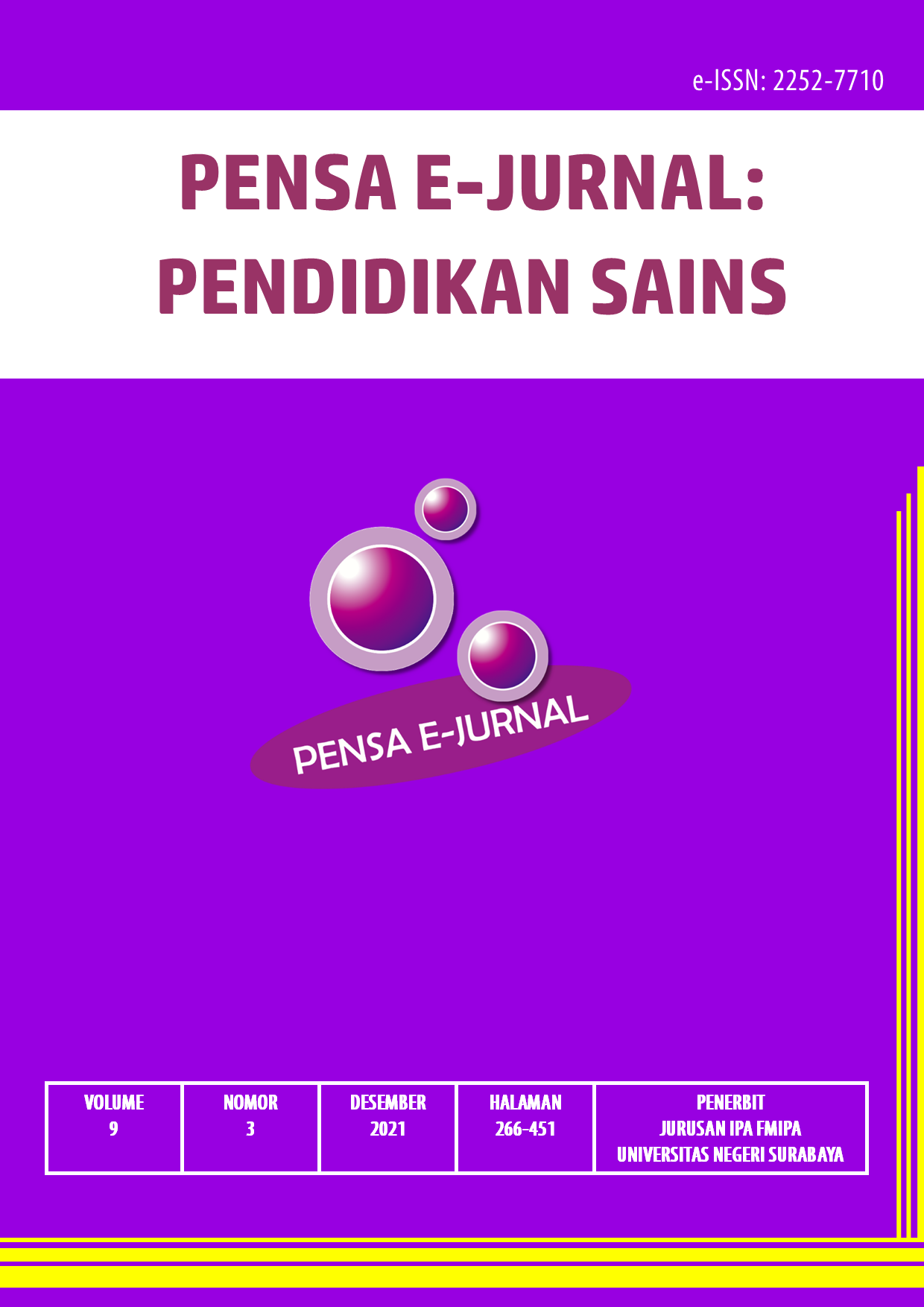ANALISIS MUATAN HIGHER ORDER THINKING SKILL (HOTS) DALAM BUKU IPA KELAS VIII SMP BAB STRUKTUR DAN FUNGSI TUMBUHAN
DOI:
https://doi.org/10.26740/pensa.v9i3.38671Keywords:
HOTS, Material Content, Question ContentDownloads
Download data is not yet available.
Downloads
Published
2021-12-02
How to Cite
Suci, I. E., Martini, M., & Purnomo, A. R. (2021). ANALISIS MUATAN HIGHER ORDER THINKING SKILL (HOTS) DALAM BUKU IPA KELAS VIII SMP BAB STRUKTUR DAN FUNGSI TUMBUHAN. PENSA E-JURNAL: PENDIDIKAN SAINS, 9(3), 316–324. https://doi.org/10.26740/pensa.v9i3.38671
Issue
Section
Articles
 Abstract views: 871
,
Abstract views: 871
, PDF Downloads: 1519
PDF Downloads: 1519

















